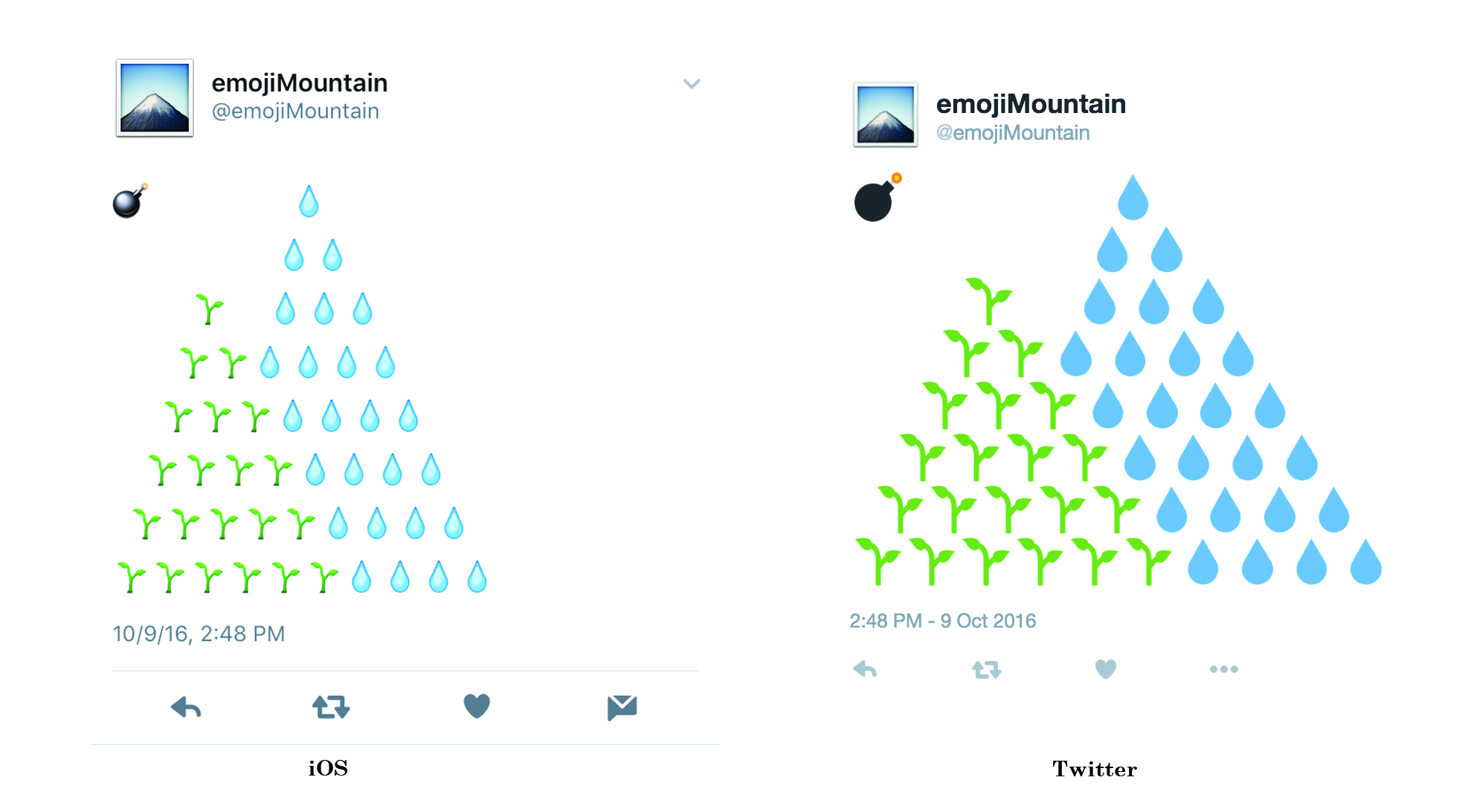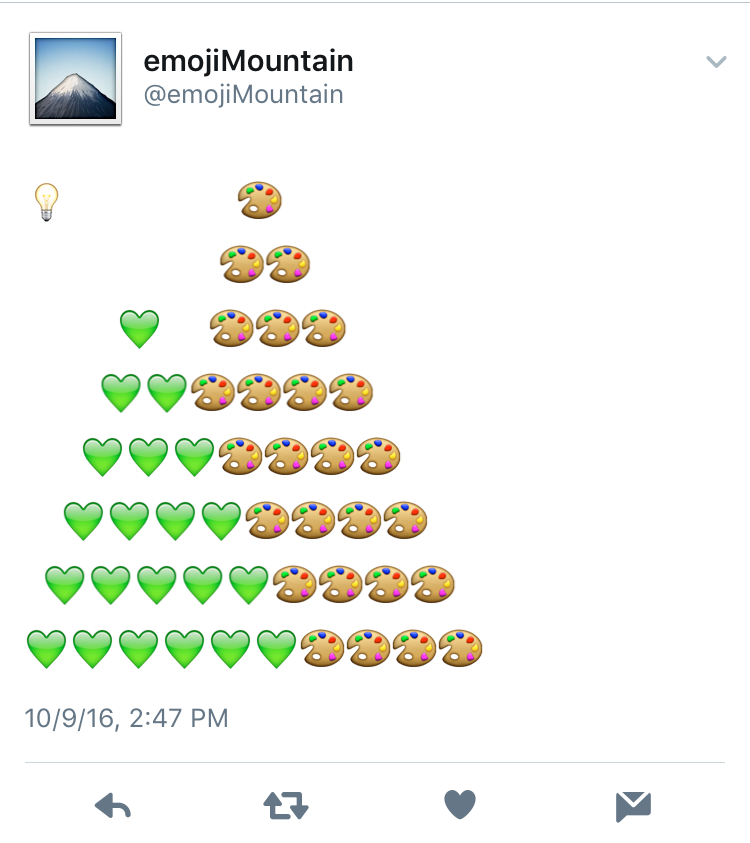
Emojis are very interesting to me. Though we see them as an image, the computer understands them as a string. Taking up pixel real estate on our screens, they only occupy text space in our parsers. How neat!
Through use language changes over time. And people ❤️ communicating with images. Various corporations pay the Unicode Consortium $20,000 a year in order to make new emojis for consumer use. In this way these companies are defining how people are communicating. It’s like they get to pay to put new words into the dictionary, or something.

@emojiMountain is a twitter bot that tweets an emojiPainting of some mountains & likes the tweet of someone who uses the word “mountain”, “🗻” or the “🌊” emoji. The input changes every time the program is run.
The emoji data is currently hardcoded as I ran into issues with my json file. For a next step I would like to write a function that varies the arrangement of the emojis to appear like different mountain ranges as well as write something that will more systematically move through the emoji arrays.
Now, looking at the likes. At first all the bot did was retweet the user’s tweet but I like the relationship between generating and aggregating content. I need to scale down how often the bot runs so it becomes clear which tweet is related to which like.

I am particularly interested in writing out parts of the script that filter the Twitter data. I am interested when people choose to use written words, an emoji or post a picture.

